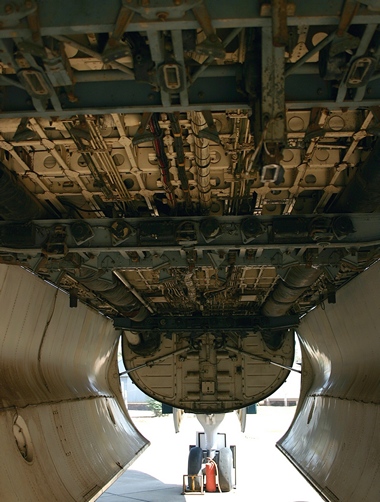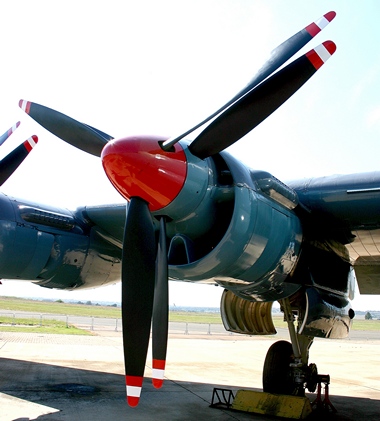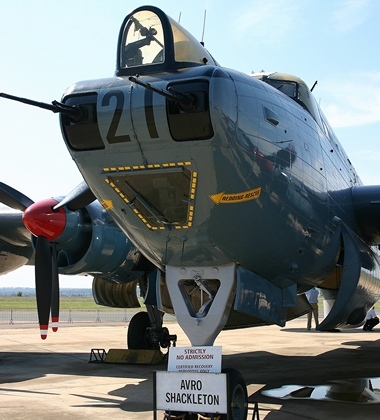Avro Shackleton-Long Distance Patrol, Search & Rescue Icon
By Willie Bodenstein
During the Second World War German naval forces did their utmost to destroy shipping in the Atlantic and in doing so hoped to starve and prevent Britain from receiving supplies from its allies. The biggest threat to shipping was the diesel electric powered submarines of the German Navy and the most effective way to neutralise this threat was armed aircraft capable of travelling long distances to search for and destroy the attackers.

A large variety of aircraft were used in this role, some like the PBY Catalina and Short Sunderland were specifically designed to operate in the anti-submarine role whilst others like the Lockheed Ventura, Vickers Wellington and Consolidated Liberator were adaptations of bombers.

The need for a long range MPA and ASW aircraft for service in the Far East operations were identified and work on the project started during 1944. However the end of the war in the Pacific and the onset of the Cold War and the anticipated rapid expansion of the Soviet Navy's submarine fleet forced a complete re-think of the requirements. In 1945 the British Air Staff issued a requirement for an aircraft able to operate in the general reconnaissance and sea rescue roles and Avro's then Chief Designer Roy Chadwick was put in charge of the project.

Avro's Shackleton had its first flight on 9 Match 1949 with Avro's Chief Test Pilot J.H. "Jimmy" Orrell at the controls. Introduced during April 1951 at the start of the Cold War it was to serve in the maritime patrol (MPA), search and rescue (SAR) and anti-submarine (ASW) roles. A small number of RAF Shackletons were adapted for airborne early warning (AEW) duties. Named after the Polar explorer Sir Ernest Shackleton the Shackleton, that includes elements of the Avro Tudor airliner, was essentially a development of the Avro Lincoln bomber. The Lincoln and Tudor were derivatives of the successful wartime Avro Lancaster bomber that played a key role in WWII.

 
Shackletons were equipped with Mk 13 ASV radar that could detect a destroyer at 40 nautical miles or a submarine at 20. Armaments consisted of two 20mm cannon in a dorsal turret, nine bombs, three homing torpedoes or depth chargers. A special camera bay housed several reconnaissance cameras and provision was made for electronic counter measure equipment, a magnetic anomaly detector (MAD) and several droppable sonobuoys. During search and rescue operations a droppable lifeboat was carried.

 
The Shackletons first operational deployment was however far removed from its intended role. In 1955 it acted as a troop transport in support of British Army troops operating in Cyprus. In 1956 in saw its first combat deployment during the Suez Crisis and in the early 1960s it took part of Operation Musketeer during the Indonesian / Malaysian conflict. During the 70s Shackletons operating from basis in Madagascar operated in conjunction with the Royal Navy to enforce the United Nation mandated oil blockade against Rhodesia.
 
In a production run lasting seven years 185 left Avro's factory floor. South Africa was the only export client. During WWII more than 100 vessels were sunk in South African waters. The SAAF then operated aging Short Sunderland's and was in the market for a large stable aircraft to replace the Sunderlands in the maritime patrol role. In 1953 an order was placed for eight Mr 2s which after some modifications were renamed Mr 3s. The first two arrived in 1957. By 1958 all were on strength at 35 Squadron patrolling the sea lanes and monitoring Soviet vessels traversing between the Indian and Atlantic oceans. Shackletons were also briefly used patrolling South Africa's Borders with Rhodesia.

One aircraft, 1718, was lost with all on board when it crashed on 8 August 1963 into the mountains at Stettynskloof in the Western Cape. The arms embargo against South Africa was by then fully in place and it was becoming more and more difficult to obtain parts and spares to keep them flying. Three of the aircraft were re-sparred, two in the UK and one locally. Time and the fatigue lives were however catching up with the fleet and during November 1984 were withdrawn from service.

(Image: Alexei Shevelev, GNU Free Documentation License)
Two of the re-sparred aircraft, 1772 and 1716 were transferred to the SAAF Museum. Pelican 16, 1716, was restored to flight during 1994. On 13 July 1994 whilst en route to the UK to partake in the 94 airshow season it crash-landed in the Sahara Desert after double engine failure. All the crew survived but the aircraft was damaged beyond repair and abandoned. Pelican 22, 1722, based at AFB Ysterplaat flew regularly until 2006 but has now been grounded because of safety concerns and lack of qualified crew. She, however, does regular taxi runs.

Often described as "a hundred thousand rivets flying in close formation" the Lancaster lookalike served in the RAF for 40 years only being retired in 1991.
General characteristics
Crew: 10
Length: 87 ft 4 in (26.61 m)
Wingspan: 120 ft (36.58 m)
Height: 17 ft 6 in (5.33 m)
Wing area: 1,421 ft² (132 m²)
Empty weight: 51,400 lb (23,300 kg)
Max. takeoff weight: 86,000 lb (39,000 kg
Fuel capacity: 4,258 imperial gallons (19,360 L)
Powerplant: four × Rolls-Royce Griffon 57 liquid-cooled V12 engine, 1,960 hp (1,460 kW) each
Propellers: contra-rotating propeller, two per engine
Propeller diameter: 13 ft (4 m)
Performance
Maximum speed: 260 kn (300 mph, 480 km/h)
Range: 1,950 nmi (2,250 mi, 3,620 km)
Endurance: 14.6 hours
Service ceiling: 20,200 ft (6,200 m)
Max. wing loading: 61 lb/ft² (300 kg/m²)
Minimum power/mass: 91 hp/lb (150 W/kg))
Armament
Guns: 2 × 20 mm Hispano Mark V cannon in the nose
Bombs: 10,000 lb (4,536 kg) of bombs, torpedoes, mines, or conventional or nuclear depth charges, such as the Mk 101 Lulu
|
         |























